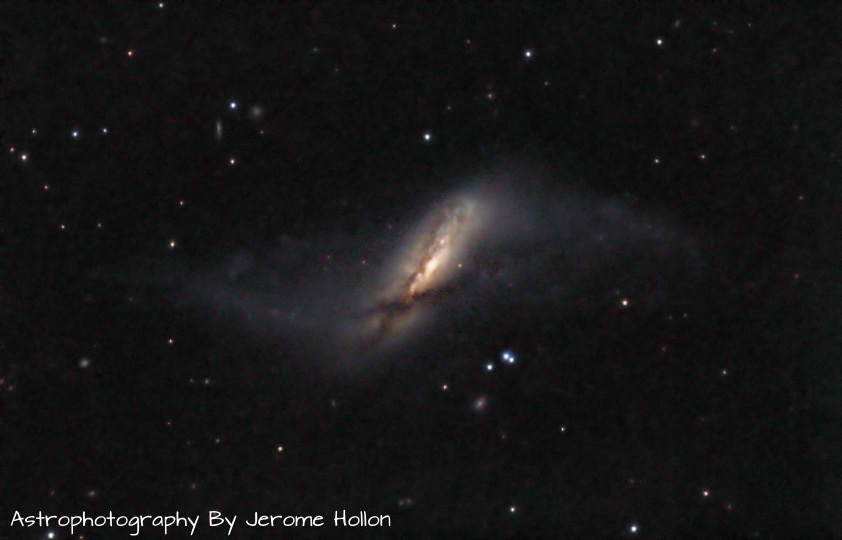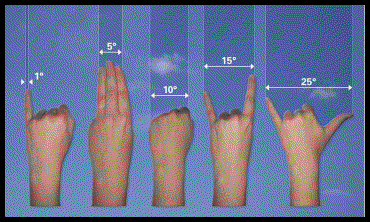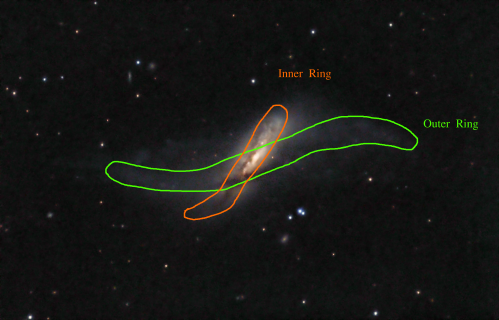NGC 660 A Unique Galaxy
Galaxy season is in full swing and I’m making full use of my new telescope, the EdgeHD 11. This is a galaxy I’ve dreamt of imaging for years but have never had the equipment to do so. See the problem with this galaxy, and you can probably tell from the slightly blurry image, is that the galaxy is so far away and much smaller than most galaxies. To put it in perspective this galaxy is half the size of our own milky way, and one third the size of the Andromeda galaxy. Its extreme distance means this galaxy is extremely tiny to us.
It’s apparent size, meaning how big it appears to us, is a minute 2.7 arc minutes by 50 arc seconds. To give you an idea what that means, if you hold out your hand at arm’s length up in the air, if you make a fist, the width of your fist is roughly 10 degrees. If you hold out just your pinky, all the way up, its width is about 1 arc degree. Each arc degree is subdivided into 60 arc minutes, and each minute is subdivided into 60 arc seconds.
To sum all that up. This galaxy is 1/25 of the width of your pinky held out at arms length, and the height is just over 1/100th of that same unit of measurement. That’s tiny!
This image, blurry as it is, took a monumental amount of time to capture. This was 35 hours total of integration time. I set up my telescope for 4 nights in a row and spent as much time on the target as I could. There were some challenging equipment issues during the capture and it was a huge effort to get a working image from it all. The galaxy will still be up for another month or two, I may try another capture on it in the future. But it certainly deserves another look!
What Makes a Galaxy Peculiar?
The NGC 660 galaxy is called a “Peculiar Galaxy” in astronomical terms. In human terms that just means a galaxy that doesn’t fit any of our standard definitions. What makes this galaxy so unique is instead of having spiral arms like the Milky Way or Andromeda, or a basic elliptical galaxy like M105, it has two polar rings. Most polar ring galaxy have a single ring of stars around a dense, bright center, but NGC 660 is unique in having two. In my image, you can see the nearly vertical first ring around the dense core, and then there a larger, slightly more diffuse ring encircling both horizontally at a 45 degree angle. Both rings are orbiting edge on to our perspective and it makes for a really dramatic sight.
How did this happen?
One thing is certain about this unique shape, the galaxy wasn’t formed this way. There are two primary theories on how this galaxy came to look like this. The most widely accepted theory is that the more massive smaller galaxy passed through a less massive galaxy and ripped it apart. The resulting excess matter has slowly settled into a ring, orbiting at a different angle thanks to the dismantled galaxy’s angular momentum. If this did happen, it probably happened at least a billion years ago and this is a stable formation.
The other theory is really interesting. Its theory is that instead of something that happened a billion years ago, what we’re seeing right now is a collision that is ongoing. The theory is that this galaxy is actually two distinct galaxies and that the smaller one is passing through the larger one.
I’m not a scientist, just a nerd so I don’t know which one is right, but either one is exciting. I really enjoy just how unique this galaxy is.
Interesting Tidbits
One interesting note about this galaxy and what it means to the science community at large is that it is helping us understand dark matter. Normally we measure dark matter by weighing (so to speak) the galaxy and comparing it’s measured mass to the mass we can see. It’s very abstract, and only precise in large scales. This galaxy, where it has two polar rings with a gap between them, we can actually measure the dark matter interaction between the two rings and how that dark matter is impacting the rotational rate of the two rings. This is more local and will hopefully lead to a more detailed understanding of dark matter.
A Note About Sources
Normally I make all my images for my blog, but in this case, I borrowed the image of the hand to arc degrees example from a wonderful astronomy club. If you enjoy my blog or that image, check out their in depth post on estimating sizes and distances in the night sky: https://www.fortworthastro.com/beginner1.html


